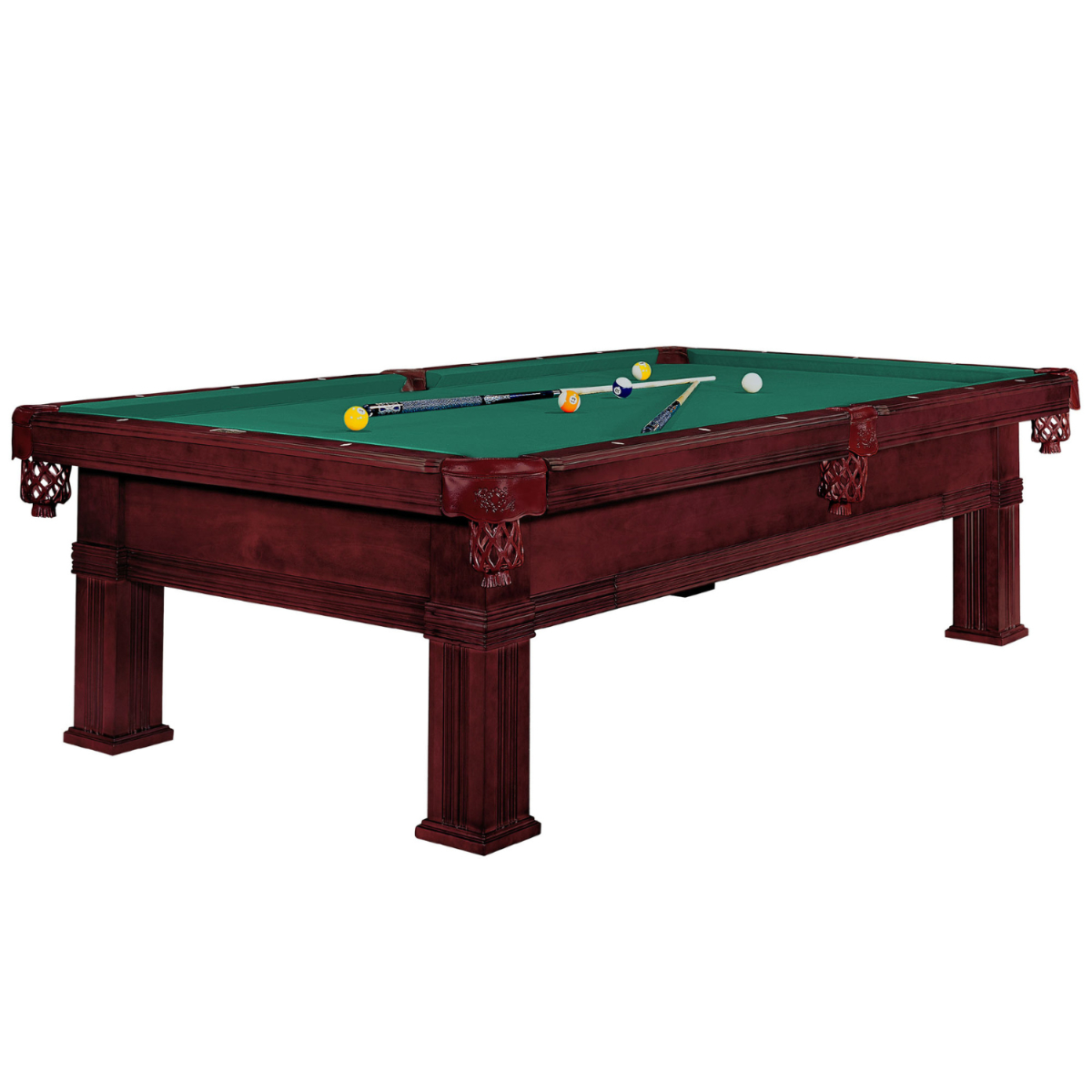Weighty Matters: Unpacking the Weight of a Pool Table's Slate
When it comes to installing a pool table, one detail often overlooked is the weight of the slate. The slate is arguably the most important component of a pool table. It forms the playing surface and is pivotal in ensuring a smooth and level game. This blog post will delve into the intriguing world of pool table slates, their weight, how it impacts the game, and the various factors to consider when moving or installing a pool table.

Getting to Know Your Pool Table: The Slate's Importance
A pool table comprises various parts, but none are as critical as the slate. The slate is the smooth, flat surface upon which the game is played. It's typically made from quarried slate due to its fine-grain composition, which can be milled into a perfectly flat surface.
Quality pool tables typically use a slate that's at least 3/4 of an inch thick. However, tournament-standard tables usually employ a slate that's 1 inch thick. The thickness of the slate is directly related to its weight - the thicker the slate, the heavier it will be.
Unveiling the Weight of Slate
The weight of the slate varies according to the size and thickness of the slate itself. For a standard pool table, which usually ranges from 7 feet to 9 feet in length, the weight of the slate can differ drastically. Let's dive into the specifics:
- A 7-foot pool table usually has a slate weight of around 150 pounds.
- For an 8-foot pool table, the slate tends to weigh around 200 pounds.
- When it comes to the larger 9-foot tables, the slate can weigh upwards of 250 pounds.
Remember, these are approximate weights and can differ based on the slate's thickness and the exact dimensions of the pool table.
The Impact of Slate Weight on Gameplay
The weight of the slate might seem like an arbitrary number, but it plays a significant role in the quality of your pool game. A heavier slate due to increased thickness will provide a smoother, more consistent roll of the ball. It's also more resistant to warping over time, ensuring the longevity of your pool table.
Moreover, a heavier slate makes for a more stable table. While this means the table will be less prone to movement during play, it also indicates that moving or installing the pool table can be quite a feat, which leads us to our next topic.
The Implications of Slate Weight for Installation and Movement
The weight of a pool table's slate has substantial implications when it comes to installing or moving a pool table. Given its weight, moving a pool table can be a difficult and potentially dangerous task if not done correctly.
Precautions and Recommendations
When moving a pool table, it's highly recommended that you hire professionals. They have the necessary experience, knowledge, and equipment to handle such a heavy and delicate item.
If you're determined to move it yourself, take the time to understand the right procedures. For instance, pool table slates are often moved in pieces. Most standard pool tables come with a three-piece slate, which is easier to transport and install than a single piece slate.
Ensure you have the proper equipment, such as a heavy-duty furniture dolly and moving straps. Additionally, never attempt to move the slate by yourself. It's always a task for at least two, and preferably more, strong individuals.

The Composition of Slate
While we've spoken extensively about slate and its weight, it's crucial to understand why slate is used. Slate is a fine-grained, metamorphic rock that originated from an original shale-type sedimentary rock composed of clay or volcanic ash. This material has the ideal characteristics for pool tables:
- Flatness: When milled correctly, slate will provide an ultra-smooth surface, ideal for the perfect roll of a pool ball.
- Durability: Slate is strong and resistant to warping, making it a long-lasting material for pool tables.
- Vibration Absorption: Slate absorbs vibrations well, which means less bounce when the balls hit each other or the table’s sides.
The Process of Moving a Pool Table
Moving a pool table is not simply a matter of brute force. It requires planning, the right tools, and a step-by-step approach:
- Disassembly: Start by removing the pockets, rails, and felt. The slate is usually screwed to the table, so it will need to be carefully unscrewed.
- Slate Removal: This is where the weight becomes a significant factor. Each piece needs to be carefully lifted and moved to avoid injury or damage to the slate.
- Transport: The slate and other parts of the pool table should be securely loaded into a moving vehicle for transport. Remember that the slate can be fragile and should be handled with care.
- Reassembly: Once at the new location, the pool table needs to be reassembled. The slate needs to be perfectly level, or it will affect the quality of play. This often involves using a carpenter's level and potentially some shims to get the perfect balance.
Installing a Pool Table
While similar to moving a pool table, installing a new one brings its own challenges. If you're installing a new pool table, it’s essential to:
- Choose the Right Location: Consider factors such as room size and shape, flooring material, and proximity to walls or furniture.
- Level the Table: As mentioned earlier, the table needs to be perfectly level. This is often achieved by adjusting the legs and using a carpenter's level on the slate.
- Install the Felt: This should be stretched tightly over the slate and secured. Wrinkles or loose felt can negatively impact play.
- Align the Rails and Pockets: These should be securely fastened and aligned correctly. Misaligned rails or pockets can lead to odd bounces or balls not staying in the pockets.

Summing Up: A Weighty Decision
In conclusion, the weight of the slate on a pool table is not just a figure. It's a testament to the quality of the table, the smoothness of the game, and the stability of the gameplay. But this weight is also a factor that makes moving and installing the table a challenging task.
Knowing about the slate weight can be incredibly beneficial, especially if you plan to move, install, or invest in a new pool table. With the information provided, you can make a more informed decision and prepare adequately for the task at hand, making the whole process a lot less daunting and a lot more rewarding.
And now that you know how heavy the slate on a pool table can be, remember - the weight of the slate is not a burden. It's a commitment to quality games, smooth shots, and memorable times around the pool table.
Are you looking for a Pool Table? check out our pool tables range Pool Tables





